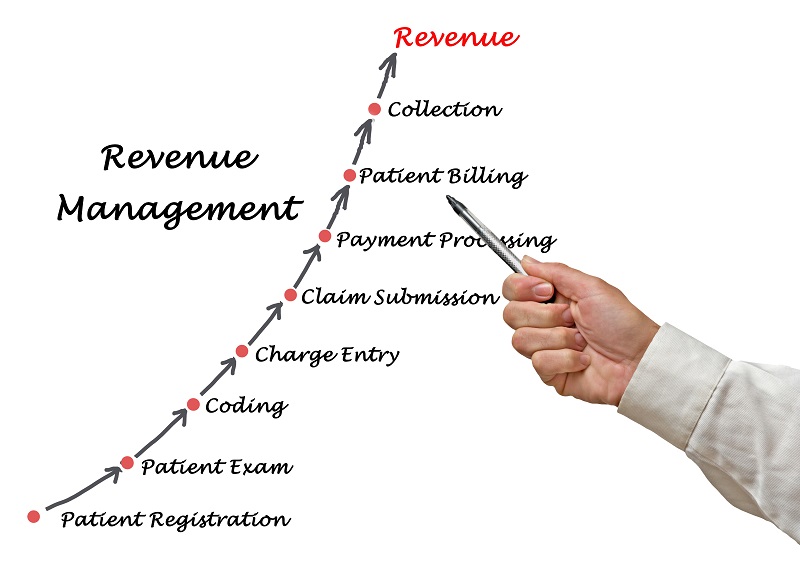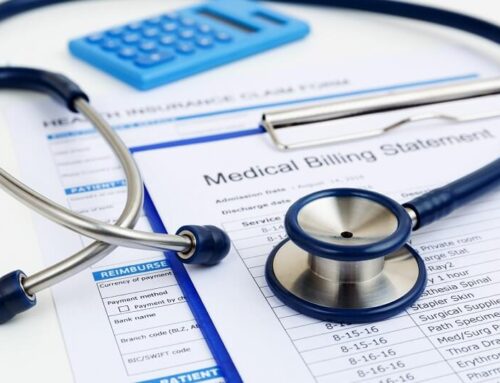Efficient debt recovery in healthcare is critical for providers who rely on timely reimbursements for financial stability. Especially as costs skyrocket in the healthcare industry, it is increasingly important for healthcare organizations to leverage technology to collect payments more efficiently. This helps the practice establish consistent cash flow and overall revenue cycle (RCM) health, which in turn empowers providers to invest in initiatives that can improve patient care, such as in-house imaging, for example. Additionally, having a consistent cash flow allows for essentials, like overhead and infrastructure costs, to always be covered.
Traditional RCM Challenges
With the complex focus of RCM, managing everything from a patient’s initial inquiry to collecting payment, it can often be bogged down by outdated technology. When workflows are not streamlined, the practice relies on outdated paper or siloed data systems that don’t communicate, and data analytics either aren’t available or aren’t interpreted; significant inefficiencies and inaccuracies can result. Furthermore, staff carry a huge burden, risking burnout, and that can lead to further operational inefficiency and revenue leakage.
Ultimately, utilizing technology to modernize debt recovery can enhance overall RCM efficiency, improving everything from cash flow and administrative wellness to patient care and recovery outcomes.
1. The Role of Technology in RCM
The introduction of technology into RCM has been prolific. It is now a part of nearly every aspect of RCM, including debt recovery. Healthcare facilities need to embrace technology due to its ability to revolutionize the RCM and debt recovery processes.
Accurate, efficient billing and coding are the first steps in RCM for quickly recovering funds. The procedures and services must be appropriately coded for timely reimbursement to occur; inaccurate coding or missing information can result in complete denials or delays.
2. Automation in Billing and Collections
Automation can help improve this process by eliminating the component of human error by allowing staff to focus on other, less tedious tasks that contribute to the practice or facility. It also ensures that claims are submitted in a timely fashion, and it can help reduce denials because they are submitted accurately. Bills can also be automated, sent out on time, and offer a way for a patient to pay digitally and instantly.
3. AI and Predictive Analytics
Additionally, AI and machine learning can aid in predictive analytics that help providers determine the likelihood that a patient will pay. This allows providers to focus debt recovery resources on accounts that are more likely to pay, routing those with a low probability to debt collectors or external debt collection agencies more quickly.
Modern Debt Recovery Strategies

In the past, debt recovery strategies involved making phone calls and mailing letters, and possibly sending an email reminder if the facility was particularly advanced. However, technology has evolved and continues to modernize debt recovery strategies, offering more ways to connect with patients and recover debt beyond just email. Debt recovery analytics can help healthcare facilities make informed decisions about how they approach debt recovery, allowing them to categorize accounts in several ways, from insurance types to outstanding balances and more.
Digital Communication Tools
Digital communication tools have expanded beyond email to include SMS texting and patient portals, accessible on web browsers and even with dedicated practice apps. This gives the practice more ways to communicate with the patients and inform (and remind) them of bills that need to be paid. Positive engagement increases the probability of payment and, overall, improves revenue cycle management.
It’s also worth noting that less obtrusive means of connecting with patients over bill payment, via text message or through a portal, give patients the ability to pay when it is convenient rather than rudely interrupting their day with demands for bill payment — no one would want that, even if they are good about paying their bills. Personalized messages can also help soften the blow of needing to make a payment. This leads to faster paid bills and better patient satisfaction.
Benefits of Modernization
The modernization of debt recovery strategies offers a variety of benefits, including improved debt recovery, but even more than that, it helps revenue cycle management become more efficient and effective. Having better RCM means that the healthcare facility is in a healthier financial position, with better cash flow and improved collection rates resulting from a shorter pay cycle.
Implementing technological advancements and modernizing debt recovery also helps reduce the labor needed to complete highly important yet tedious tasks. This reduces the administrative burden, allowing employees to focus on other functions within the practice, ultimately leading to happier employees. Staff can better assist patients, resulting in improved patient satisfaction.
Additionally, by not relying on manual processes, the potential for error is reduced, and bills and reminders are communicated more efficiently. Giving patients more access to their health records and billing, such as through a website portal or app, also helps them feel more in control of their care. They often will feel more respected, in control, and as such, ready to remit payment.
Summary of Benefits
- Improved Collections: Automated outreach and segmentation enhance recovery success.
- Enhanced Cash Flow: Faster payments support a more predictable revenue stream.
- Reduced Admin Burden: Staff can redirect efforts to higher-value tasks.
- Better Patient Experience: More convenient, respectful communication increases satisfaction.
- Error Reduction: Automation and integration reduce billing mistakes and missed follow-ups.
Implementation Considerations
1. Selecting the Right Partner
When considering looking for technologically advanced RCM and debt recovery services, healthcare providers should consider more than just the software; they should look for a partner.
A solid partner will offer support that makes sense for that facility, catering to their needs, maintaining responsiveness and open communication before, during, and after the contract for services is signed.
2. Seamless Integration
With regard to the software, it needs to be able to communicate and integrate with the existing systems in your practice. Ensuring that current EHR, billing, and RCM platforms can all connect and share information will eliminate data silos and the need for additional manual work. This results in a streamlined system that improves accuracy, reduces duplication and the risk of missed communications (bills, follow-ups, appointment confirmations, and more), supports patient-provider relationships by providing real-time visibility, and enhances collection activity.
3. Compliance and Security
Additionally, practices should take extra care to engage in RCM and debt recovery providers who are well-versed in compliance and data security, ensuring current proficiency in the latest regulatory requirements in an ever-changing landscape. Security measures must be encrypted, robust, and with the proper compliance certifications to protect information subject to HIPAA and other regulations. Keeping private information private is non-negotiable.
Key Takeaways
Modernizing debt recovery through advanced technology leads to:
- Higher collection efficiency
- Streamlines workflows
- Improved patient relations
- Lower operational costs
Looking Ahead: The Future of Tech-Enabled RCM
Emerging technologies like blockchain and intelligent automation promise even greater efficiency and transparency in healthcare payments. Facilities that invest now will be better prepared for future regulatory shifts, patient expectations, and digital transformations.
Enhance Your RCM With Technology
If you’re ready to leverage technology and modernize debt recovery at your healthcare facility, rest assured that choosing the technology partner that offers the best in support, technology, and security is only a phone call away. Reach out to Credence Global Solutions today — our team can help you enhance RCM efficiency and improve patient satisfaction, leading to a better business overall. By embracing the future, your practice will be ready for today, tomorrow, and beyond.





